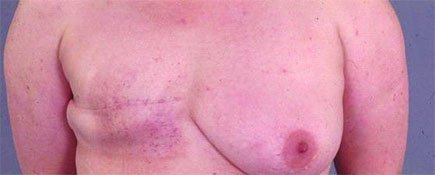Cancer
TIPS TO DETECT BREAST CANCER EARLY
Written by Super User
Breast cancer is a condition that is quickly becoming a very common occurrence, and experts say that although a person might be genetically predisposed to the condition,
there are steps that can be taken to catch it early on. Everything from when you go for the screening tests, whom you go to and how often you get the tests done matter in the process of eliminating the possibility of suffering from the dreaded disease. In this post we give you 10 tips that you should keep handy while getting tested for breast cancer. Get a mammogram when you are younger, rather than when you are older: Over 40? Its time you got regular mammograms. According to the American Cancer Society women should begin getting annual mammograms at the age of 40. This is because the early detection of breast cancer offers the best chance for a cure. Choose the right man for the job! You can get a mammography at any hospital but getting the right diagnosis after the test is what is worth its weight in gold. Choose a doctor who is experienced in reading mammography and has worked with a number of patients previously. His/her experience gives them the added advantage of identifying any problems in your reports. This is where an inexperienced physician may fail. Pick digital over conventional A digital mammography is much more accurate when it comes to detecting any problems in women with dense breast tissue — especially found in women below the age of 40. Moreover digital scans do a better job of detecting cancers when compared to the traditional film mammography. Schedule the date for your test carefully most women put off going for a mammography because they are scared about how painful the test is likely to be. But remember that a mammography should not be painful. To help reduce the amount of pain try to schedule your test after your menses (monthly periods), so that the breast tissues are less sensitive. During the test if you do experience pain and discomfort, be sure to tell the technician about it so that he/she can help you feel more comfortable. If the test has really gone off badly, you could try taking over-the-counter medication to help relieve some of the pain and inflammation. Don’t let the fear of cancer stop you If you fear the results of your mammography, know that you are not alone. A large number of women, fear what their test results could reveal but that is no reason to not go for the test. If your results are somewhat out of the ordinary, you may be called to repeat the test. But this in no way means you have cancer. Remember that not all abnormalities mean cancer. Try to get your results while you wait Something that you could do to make the anxiety a little lesser is to schedule your tests so that you are able to receive your test results before you leave. If you are going back for a repeat test try to schedule your appointment in such a way that you get your test results when you visit the hospital the second time. This practice not only saves time but also helps fight anxiety. Do regular breast self-exams Knowing how your breasts feel normally is very important. This will help you decipher the difference between normal and abnormal. You can find out how to do a breast self-exam or ask your healthcare practitioner to teach you. Changes like lumps, swelling, skin irritation or dimpling are all signs that you need to talk to your healthcare provider immediately. Get a breast exam from your doctor as well In addition to mammography, have a regular breast exam by your health care provider. The American Cancer Society recommends that women 40 and over should receive annual clinical breast exams and women in their 20s and 30s should have clinical breast exam as part of a periodic health exam by a health professional at least every three years. Know your hereditary risk factors If you have family members who have had breast cancer – especially a mother or sister – and if they had breast cancer before reaching menopause, tell your doctor. This is because your own risk of cancer may be higher than average. Some women at high risk may be recommended for annual MRI in addition to a screening mammogram.
Excerpts from www.health.india.com


